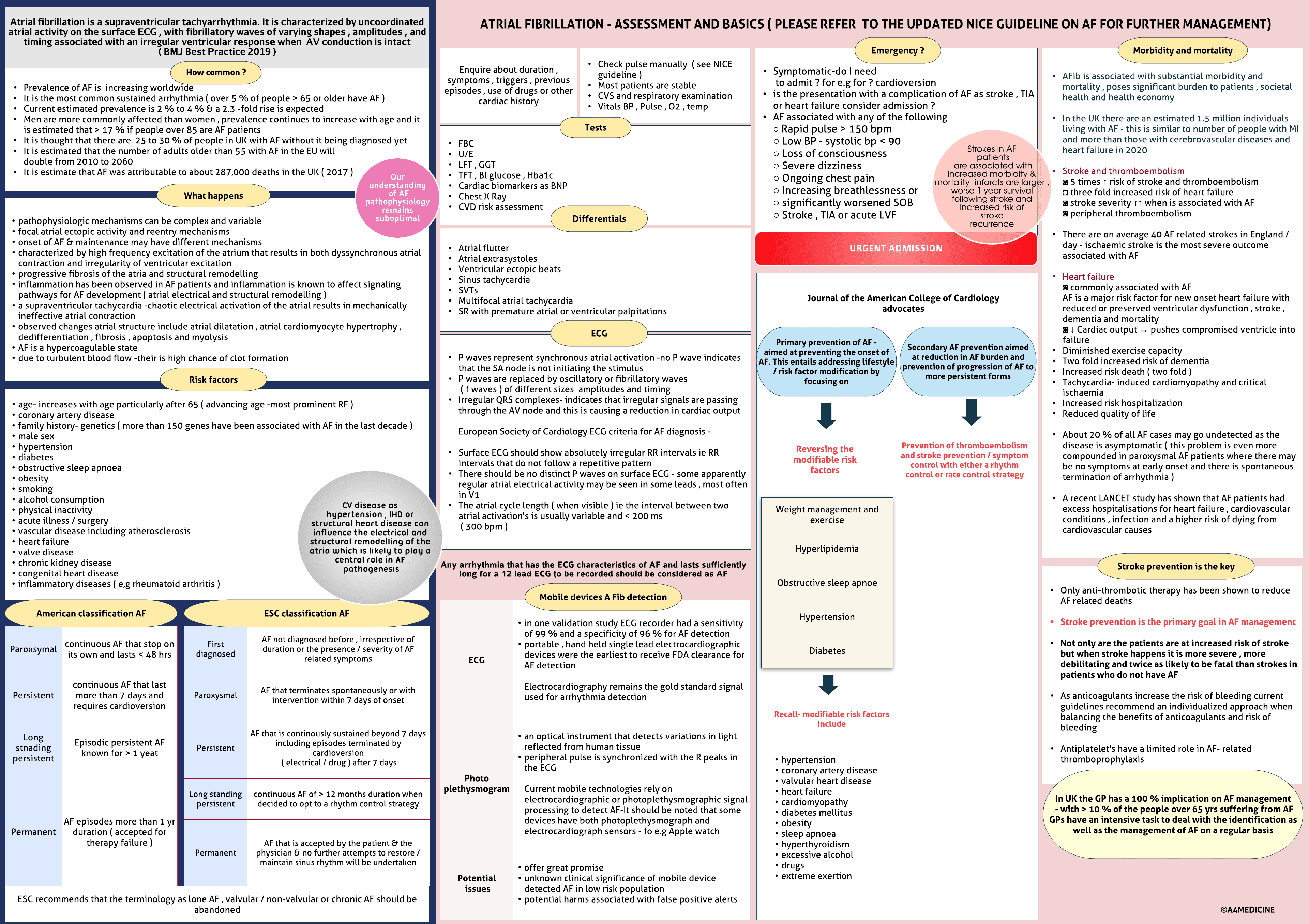Download A4Medicine Mobile App
Empower Your RCGP AKT Journey: Master the MCQs with Us!

Disorganized electrical activity in atria- most common sustained cardiac arrhythmia.
Atrial fibrillation is a supraventricular tachyarrhythmia. It is characterized by uncoordinated atrial activity on the surface ECG , with fibrillatory waves of varying shapes , amplitudes , and timing associated with an irregular ventricular response when AV conduction is intact ( BMJ Best Practice 2019 )
pathophysiologic mechanisms can be complex and variable focal atrial ectopic activity and reentry mechanisms onset of AF & maintenance may have different mechanisms characterized by high frequency excitation of the atrium that results in both dyssynchronous atrial contraction and irregularity of ventricular excitation progressive fibrosis of the atria and structural remodelling inflammation has been observed in AF patients and inflammation is known to affect signaling pathways for AF development ( atrial electrical and structural remodelling ) a supraventricular tachycardia -chaotic electrical activation of the atrial results in mechanically ineffective atrial contraction observed changes atrial structure include atrial dilatation , atrial cardiomyocyte hypertrophy , dedifferentiations , fibrosis , apoptosis and myolysis AF is a hypercoagulable state due to turbulent blood flow -their is high chance of clot formation
age- increases with age particularly after 65 coronary artery disease family history- genetics ( more than 150...
Try our Free Plan to get the full article.